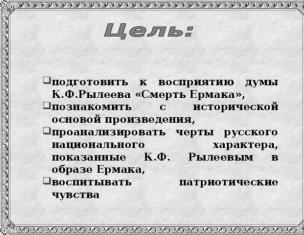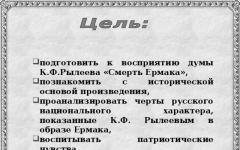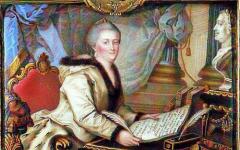The ode "Felitsa" written in 1782 is the first poem that made Gavril Romanovich Derzhavin very famous, and also, which became an example of a new style in Russian poetry.
The ode got its name from the name of the heroine “Tales of Tsarevich Chlorine”, which was written by Catherine II herself. By the same name, which translates as “happiness,” she is also named in the ode of Derzhavin, who glorified the empress and caricatured her entire entourage. Indeed, having violated all the traditions of the genre of commendable odes, Derzhavin
He widely introduced colloquial vocabulary and even non-literary statements into it, but most importantly, he did not draw an official portrait of the Empress, but depicted her human appearance. But not everyone was as enthusiastic about this poem as the Empress. It has confused and disturbed many.
On the one hand, in the ode “Felitsa” a completely established image of a “god-like princess” is drawn, which expresses the writer’s concept of the standard of the most blessed monarch. Noticeably embellishing the real Catherine II, Derzhavin firmly believes in the image painted by him.
On the other hand, in the writer's verses one can hear the thought not
Only about the wisdom of power, but also about the dishonesty of the performers, who are only interested in their own benefit. The idea is not new, but behind the figures of the nobles that were described in the ode, the features of real people were clearly visible.
In these images, one can easily recognize the favorite of the Empress Potemkin, her close associates Alexei Orlov, Panin, Naryshkin. Having painted their bright mocking portraits, Derzhavin showed great courage - because any of those who were offended by the poet could easily deal with the writer. And only the benevolent attitude of the Empress saved Derzhavin. And even Catherine, he decides to give a recommendation: to obey the law, which is the same for everyone. The work ends with the traditional praise of Catherine and the desire for all the best for her.
Thus, in Felitsa, Derzhavin appeared as a bold pioneer who combined the style of a laudatory ode with the individualization of characters and satire, and introduced elements of low styles into the high genre of the ode. Later, the author himself defined the genre of "Felitsa" as a "mixed ode".
(No ratings yet)
Essay on literature on the topic: Summary of Felitsa Derzhavin
Other writings:
- The reputation of a poet develops during his lifetime. The real understanding of his poetry and its place in literary development is determined and determined by history. A vivid illustration of this pattern is the work of Derzhavin. Glory came to Derzhavin suddenly in 1783, when in the first issue of Read More ......
- The main genre of Russian poetry of the 18th century is the ode. The odes of M. V. Lomonosov “On the day of the accession to the throne of Empress Elizabeth ...” (1747) and G. R. Derzhavin “Felitsa” are considered textbooks. Both of these works sing of the Russian empresses, but they differ sharply from each other. Read More ......
- Monument Gavriil Romanovich Derzhavin - the great Russian poet of the XVIII century. In his work, he illuminated all the problems that were present in the high society of Russia. In 1795, he wrote the poem "Monument", in which he proclaimed his right to immortality. Initially, the poem was Read More ......
- Notes Notes from well-known incidents and true cases, containing the life of Gavrila Romanovich Derzhavin. The author, who lists at the beginning of the notes all his ranks, positions and orders, but does not mention poetic fame at all, was born in Kazan from Read More ......
- Derzhavin's work is deeply contradictory. Revealing the possibilities of classicism, he at the same time destroyed it, paving the way for romantic and realistic poetry. Derzhavin's poetic work is extensive and mainly represented by odes, among which one can distinguish civil, victorious-patriotic, philosophical and anacreontic. A special place Read More ......
- Gavriil Romanovich Derzhavin (1743-1816) is another prominent figure in Russian literature of the 18th century. His poetry completes the classicist tradition and at the same time opens up new paths, prepares for the emergence of Pushkin's "poetry of reality." According to Belinsky, Derzhavin's poetry “was the first step in the transition from rhetoric to Read More ......
- G. R. Derzhavin is a poet of the last third of the 18th century. His predecessors adhered to the principles of classicism, but the further development of poetry could not be carried out without violating, and subsequently destroying, the boundaries of the genre. These violations began to be committed by the classic writers themselves (Lomonosov, Sumarokov, Kheraskov and Read More ......
- Many of Derzhavin's contemporaries considered him a court poet. But he never was, despite attempts to persuade him to do so (recall the unsuccessful exhortation of the poet A. V. Khrabrovitsky, Catherine II's secretary of state). His poems speak of the frailty of life, death and immortality. Read More ......
In 1782, the still not very well-known poet Derzhavin wrote an ode dedicated to the "Kirghiz-Kaisak princess Felitsa." Oda was called "To Felice" . The difficult life taught the poet a lot, he knew how to be careful. The ode glorified the simplicity and humanity of the treatment of the people of Empress Catherine II and the wisdom of her reign. But at the same time, in ordinary, and even rude, colloquial language, she told about luxurious amusements, about the idleness of Felitsa's servants and courtiers, about "murzas" who were by no means worthy of their ruler. In the murzas, Catherine's favorites were transparently guessed, and Derzhavin, wishing that the ode would fall into the hands of the empress as soon as possible, was at the same time afraid of this. How will the autocrat look at his bold trick: a mockery of her favorites! But in the end, the ode ended up on the table of Catherine, and she was delighted with her. Far-sighted and intelligent, she understood that courtiers should be put in their place from time to time and hints of an ode are a great reason for this. Catherine II herself was a writer (Felitsa is one of her literary pseudonyms), which is why she immediately appreciated the artistic merits of the work. Memoirists write that, having called the poet to her, the empress generously rewarded him: she presented him with a golden snuffbox filled with gold chervonets.
Fame came to Derzhavin. The new literary magazine Interlocutor of Lovers of the Russian Word, which was edited by the Empress's friend Princess Dashkova and published by Catherine herself, opened with an ode to Felitsa. They started talking about Derzhavin, he became a celebrity. Was it only the successful and bold dedication of the ode to the empress? Of course not! The reading public and fellow writers were struck by the very form of the work. The poetic speech of the "high" odic genre sounded without exaltation and tension. A lively, figurative, mocking speech of a person who understands well how real life works. The empress, of course, was spoken of commendably, but also not pompously. And, perhaps, for the first time in the history of Russian poetry as about a simple woman, not a celestial:
Not imitating your Murzas, You often walk on foot, And the simplest food Happens at your table.
Strengthening the impression of simplicity and naturalness, Derzhavin ventures on bold comparisons:
You don't play cards, like me, from morning to morning.
And, moreover, he is frivolous, introducing into the ode indecent, according to the secular standards of that time, details and scenes. Here is how, for example, a Murza courtier, an idler and an atheist, spends his day:
Or, sitting at home, I'll play, Playing fools with my wife; Now I get along with her on the dovecote, Sometimes we frolic in blindfolds, Now I have fun in a pile with her, Now I look for her in my head; Then I like to rummage through books, I enlighten my mind and heart: I read Polkan and Bova, Over the Bible, yawning, I sleep.
The work was filled with cheerful, and often caustic allusions. To Potemkin, who loves to eat well and drink well ("I drink champagne waffles / And I forget everything in the world"). On Orlov, who boasts of magnificent departures ("a magnificent train in an English carriage, golden"). On Naryshkin, who is ready to give up all his affairs for the sake of hunting (“I take care of all matters / Leaving, I go hunting / And I amuse myself with the barking of dogs”), etc. In the genre of a solemn laudatory ode, this has never been written before. Poet E.I. Kostrov expressed a general opinion and at the same time slight annoyance about a successful opponent. In his poetic "Letter to the creator of an ode composed in praise of Felitsa, princess of Kirghizkaysatskaya" there are lines:
Frankly, it is clear that the soaring odes have gone out of fashion; You knew how to exalt yourself among us with simplicity.
The Empress drew Derzhavin close to her. Remembering the "fighting" qualities of his nature and incorruptible honesty, she sent him to various audits, ending, as a rule, with noisy indignation of those being checked. The poet was appointed governor of Olonets, then Tambov province. But he did not hold out for a long time: he dealt with local officials too zealously and imperiously. In Tambov, things went so far that in 1789 the governor of the region, Gudovich, filed a complaint with the empress against the "arbitrariness" of the governor, who did not consider anyone or anything. The case was referred to the Senate Court. Derzhavin was dismissed from his post and until the end of the trial he was ordered to live in Moscow, as they would say now, under a written undertaking not to leave the country.
And although the poet was acquitted, he was left without a position and without the favor of the empress. Once again, one could count only on oneself: on enterprise, talent and luck. And don't be discouraged. In the autobiographical “Notes” compiled at the end of his life, in which the poet speaks of himself in the third person, he admits: “There was no other way but to resort to his talent; as a result, he wrote the ode “Image of Felitsa” and to the 22nd on the date of September, that is, on the day of the coronation of the empress, handed her over to the court<…>The Empress, having read it, ordered her favorite (meaning Zubov, Catherine's favorite, - L.D.) the next day to invite the author to dine with him and always take him into her conversation.
Read also the other topics of Chapter VI.
- the largest phenomenon in Russian literature of the XVIII century. He is known mainly for his odes, besides which he also left wonderful lyrics. Seemingly respecting the external forms of classicism, Derzhavin in his odes produced a whole poetic revolution: he breaks with the conventional requirements of classicism where they interfere with his poetic creativity. So, for example, in laudatory odes he introduces a satirical element, moves from a high solemn style to the most simple, sometimes jocular tone; uses simple words, ordinary expressions, not observing the “high calm”, which Lomonosov and Sumarokov strictly adhered to.
We see all this already in the ode “Felitsa”, which made Derzhavin famous (see its full text and analysis on our website).
Derzhavin. Felitsa. Oh yeah
The name "Felitsa", in which Derzhavin personifies Empress Catherine II, is taken from her own fairy tale " About Tsarevich Chlor».
"God-like princess
Kirghiz-Kaisatsky hordes,
Whose wisdom is incomparable
Discovered the right tracks
Tsarevich young Chlor
Climb that high mountain
Where a rose without thorns grows
Where virtue dwells:
Give, find her, advice.
This is how Derzhavin begins his ode. Praising Ekaterina - Felitsa, he talks about her tastes and lifestyle, comparing her with the nobles around her, whom he calls "Murzas". He also calls himself "Murza", hinting at his Tatar origin; - but often this Murza, on whose behalf an ode is written, depicts one of the famous nobles - Potemkin, Orlov, Naryshkin, Vyazemsky; Derzhavin mercilessly ridicules them.
Portrait of Gavriil Romanovich Derzhavin. Artist V. Borovikovsky, 1811
In contrast to her nobles, Catherine loves simplicity:
“Murzam does not imitate his own,
Often you walk
And the food is the simplest
It happens at your table.
Don't value your peace
Reading, writing before laying
And all from your pen
Bliss is shed on mortals!
Then follow the portraits of various nobles. Potemkin is beautifully depicted, - "The magnificent prince of Taurida", with his huge state plans, fantastic luxury and rich feasts:
"And I, sleeping until noon,
I smoke tobacco and drink coffee;
Transforming everyday life into a holiday
I circle my thought in chimeras:
Then I steal captivity from the Persians,
I turn arrows to the Turks,
The name of the poem, translated from Latin, means happiness and is dedicated to the great Catherine II.
From the first lines of the work, the poet extols his empress and creates a traditional picture of a god-like princess, which embodies the author's concept of the ideal of the blessed monarch. Idealizing the real empress, the poet at the same time believes in the image he depicts. Catherine appears as a smart and active princess, but the poems are not oversaturated with excessive pathos, since the poet uses a mixture of poetic genres (ode and satire), breaking the traditions of Russian classicism, a rare skill for those years. Moving away from the rules of writing a laudatory ode, the author introduces colloquial vocabulary into the poem, portraying the Empress as an ordinary person. Even to her, the poet dares to give advice on the implementation of the laws adopted by the kings together with his subjects.
The poem sounds about the wisdom of the autocrats, and about the negligence of the courtiers, striving only for their own benefit. In a satirical form, the author makes fun of the environment of the princess. This method is not new for the poetry of that time, but behind the images of the courtiers depicted in the work, the features of existing people (the favorites of Empress Potemkin, Orlov, Panin, Naryshkin) clearly appear. Satirically describing their images, the poet shows great courage, because he could pay for it with his life. The author was saved only by Catherine's favorable attitude towards him.
In the course of the poem, the poet manages not only to dissemble and portray delight, but also to become angry. That is, the author behaves like a normal living person, an individual personality with the features of the people, and this is an unprecedented case for the genre of poetic ode.
The poet defined the style of his own poems as a mixed ode, arguing that the poet has the right to talk about everything, and not just sing laudatory hymns. Thus, Derzhavin made an innovative act in poetry, creating individual characters of non-fictional people against the backdrop of a colorful everyday environment.
Analysis of the Ode by Felitsa Derzhavin
Derzhavin is an outstanding poet who had his own style and his own vision of what was happening. Recognition came to the poet after he wrote the ode "Felitsa". It was in 1782, when Felitsa was published, that its author became famous. This poem was written to Catherine II. She liked the work of the poet very much, and for this the ruler generously rewarded Derzhavin. The poet worked on a work at a time when such a genre as an ode was no longer popular. But this did not stop Derzhavin.
The author of "Felitsa" simply broke all the stereotypes of that time. Many writers and critics were a little taken aback. Derzhavin disregarded all the rules of the literature of that time and wrote his own work. The works of writers and poets of those times were simply overflowing with beautiful words. In turn, Derzhavin decided to use rather ordinary words to show how he felt about Catherine. Derzhavin also wrote about his attitude to the close people of the Empress.
Derzhavin's early work, namely "Felitsa", of course, has lines in which there is an exaltation of the empress. The poet considered her a kind and intelligent ruler. In total, there are 26 ten lines in Felitsa. More than half of them, the poet dedicated to Catherine, and he stretched all his feelings a lot. In addition, you can see that some compliments and praises are repeated in the work "Felitsa".
It was a difficult time for Derzhavin, especially the period of writing Felitsa. It was a time when society was going through certain changes. People began to hold their own opinions less and went with the flow. The super-personality and thinking of people in the country was lost. There was a so-called crisis in which there was a struggle between the current government and the old society. This is what influenced the fact that the ode genre began to be perceived by people. The poet just at that moment wrote "Filitsa". Overnight, he became famous and, moreover, a pioneer, an innovator of this genre. Readers were amazed, and critics did not know how to evaluate the work of the author. Derzhavin was able to introduce humor into the ode genre, which concerns everyday life for everyone.
After the ode was released to the people, the author himself was able to determine the genre in which he wrote the work. He called his work a mixed ode. Derzhavin was of the opinion that in an ordinary ode the poet praises only high-ranking people, but in the genre in which Derzhavin writes, one can write about everything.
The poet makes it clear that the ode is a kind of precursor to the novel. It can embody many thoughts concerning Russian life.
Analysis of Felitsa's poem according to plan
Perhaps you will be interested
- Analysis of the ballad of Zhukovsky Lyudmila Grade 9 essay
Vasily Andreevich Zhukovsky became the founder of the theme of romanticism with his own unique style. The ballad "Lyudmila" was written by Zhukovsky based on the work of the German poet Burger.
- Analysis of the poem Freedom Nekrasov
Each result of the creative activity of N. A. Nekrasov confirms the participation of the author in the social events of the nineteenth century. He could not remain indifferent to the feelings of the people associated with the abolition of serfdom. The author has always shared the people's suffering
- Analysis of the poem In the village of Nekrasov
For almost every person, existence is a series of joys and difficulties, achievements and trials, worries that fill different days. If you look at this picture in total
- Analysis of the poem I shudder from the cold Mandelstam
The work belongs to the early work of the poet and, in terms of genre orientation, is lyrical poetry, which was included in the second edition of the poetry collection "Stone".
- Analysis of the poem Swallow Maikov Grade 5
Autumn in the life of each person has its own: for some it is Pushkin's autumn - a dull time - eyes charm, lush nature withering, which pleases with its colors, its majesty and solemnity, this is a time of creative upsurge
In a desire to please the empress, he took as the basis of his work her own work, shortly before that published in a small edition. Naturally, for a brightly talented poet, this story sparkled with richer colors, in addition, introducing a new style into the history of Russian versification and making the poet a celebrity.
Analysis of the ode
"Felitsa" is provided with a subtitle that clarifies the purpose of writing this work. It tells about the appeal to the wise princess of the Tatar Murza, who settled in Moscow, but is on business in St. Petersburg. The reader is also mystified by the fact that the ode was allegedly translated from Arabic. The analysis of the ode "Felitsa" should be started with a name that does not sound native to either Russians or Arabs.
The fact is that this is exactly what Catherine II called her heroine in her fairy tale about Tsarevich Chlorine. Served as the soil for the Italian language (here you can remember someone like Cutugno with the exclamation "Felicita") Latin translates the word "felitsa" (Felitsa - felicitas) as happiness. Thus, from the first line, Derzhavin began to exalt the empress, then he could not resist satire in the descriptions of her environment.

Artistic synthesis
An analysis of the ode "Felitsa" shows the setting for the ordinary, accepted at that time, solemn laudatory ode to the date. Written in the traditional stanza of the ode - ten lines, and, as expected, But before Derzhavin, no one had dared to merge two genres that were opposite in their target orientation - a majestic laudatory ode and a caustic
The first was the ode "Felitsa". Derzhavin, as it were, "stepped back" in his innovation, judging by the exactly fulfilled conditions of the genre, at least in comparison with "Poems for Birth", which are not even separated by a stanza. However, this impression disappears as soon as the reader overcomes the first few stanzas. Still, even the composition of the Felitsa ode is a much broader artistic synthesis.

Fairy tale "Felice"
It is interesting to consider what motives inspired Derzhavin to compose this "fan fiction", what served as the fundamental basis and whether this topic was worthy of continuation. Apparently, worthy, and very much. Catherine II wrote her fairy tale for her grandson, so far small, but in the future the great Alexander I. In the Empress's fairy tale, we are talking about the Kiev prince Chlor, who was visited by the Kyrgyz Khan to check whether the prince is really as smart and dexterous as they say about him.
The boy agreed to pass the test and find the rarest flower - a rose without thorns - and set off. On the way, having responded to the invitation of Murza Lentyag (a telling name), the prince tries to resist the temptations of that luxury and idleness with which Lentyag tempts him. Fortunately, this Kirghiz khan had a very good daughter, who was called Felice, and an even better grandson, who was called Reason. Felitsa sent her son with the prince, who went out with the help of Reason to the goal of his path.

Bridge between fairy tale and ode
Before them was a steep mountain, without paths and stairs. Apparently, the prince himself was quite stubborn, because, despite the enormous work and trials, he nevertheless climbed to the top, where he adorned his life with a rose without thorns, that is, with virtue. An analysis of the ode "Felitsa" shows that, as in any fairy tale, the images here are conditionally allegorical, but in Derzhavin at the beginning of the ode they stand very firmly, and all the odic beginnings of classical samples, where climbing Parnassus and communication with the muses are inevitable, fade next with seemingly simple images of a children's fairy tale.
Even the portrait of Catherine (Felitsa) is given in a completely new manner, which is completely different from the traditional laudatory description. Usually in the odes, the honored character appears in the inexpressive image of the goddess, walking along the solemn booming rhymes of the verse with heavy rhythmic shortness of breath. Here the poet is inspired, and - most importantly - equipped with poetic skill. Poems are not lame and are not inflated with excessive pathos. The plan of the ode "Felitsa" is such that Catherine appears before the reader as a smart, but simple and active Kyrgyz-Kaisat princess. It plays well on the harmony of the construction of this image and the contrast - the image of Murza, vicious and lazy, which Derzhavin uses throughout the ode. Hence the unprecedented genre diversity that distinguishes the ode "Felitsa".

Derzhavin and the Empress
The position of the singer here also changes in relation to the subject of chanting, if we consider not only all previous Russian literature, but even the poems of Derzhavin himself. Sometimes a certain god-likeness of the queen still slips in the ode, but with all this and with the general reverence that the Felitsa ode demonstrates, the content also shows a certain shortness of the relationship, not familiarity, but the warmth of almost family intimacy.
But in satirical lines, Derzhavin can sometimes be understood ambiguously. The collective features of the image of Murza ridicule all of Catherine's nobles in turn, and it is here that the poet does not forget himself. Auto-irony is all the more rare in the poetry of those years. The author's "I" is not devoid of lyrics, but it is clearly made clear that "This is Felitsa, I am depraved!", "Today I rule over myself, and tomorrow I am a slave to whims." The appearance of such an author's "I" in the ode is a fact of great artistic significance. Lomonosov also began odes with "I", but as a loyal slave, while Derzhavin's author is concrete and alive.

Narrative from the author
Naturally, the composition of the ode "Felitsa" would not have sustained a full-fledged author's individuality. Derzhavin most often gives under the author's "I" a conventional image of a singer, which is usually always present in odes, just as in satires. But there is a difference: in the ode the poet plays only sacred delight, and in satire only indignation. Derzhavin united "one-stringed" genres by creating a living human poet, with an absolutely concrete life, with a variety of feelings and experiences, with the "multi-stringed" music of verse.
An analysis of the ode "Felitsa" certainly notes not only delight, but also anger, blasphemy and praise in one bottle. Along the way, he manages to dissemble, ironically. That is, he behaves throughout the entire work as a completely normal and living person. And it should be noted that this individual personality has undoubted features of the nationality. In an ode! And now such a case would be unprecedented if someone in our time wrote odic poetry.
About genres
The ode "Felitsa", the content of which is so rich in contradictions, as if warmed by warm sunbeams, is light colloquial speech from the reality of everyday life, light, simple, sometimes playful, which directly contradicts the laws of this genre. Moreover, there was a genre revolution, almost a revolution.
It must be clarified that Russian classicism did not know poetry as "simply poetry." All poetry was strictly divided into genres and types, sharply demarcated, and these boundaries were unshakable. Ode, satire, elegy and other types of poetic creativity could not mix with each other.
Here, the traditional categories of classicism are completely broken after the organic fusion of ode and satire. This applies not only to Felitsa, Derzhavin did this both earlier and later. For example, the ode to death is half an elegy. Genres become polyphonic with the light hand of Derzhavin.

Success
A colossal success went to this ode immediately after its publication: "Everyone who can read Russian has found it in the hands of" - according to a contemporary. At first, Derzhavin was wary of widely publishing the ode, he tried to hide the authorship (probably, the depicted and very recognizable nobles were vindictive), but then Princess Dashkova appeared and published "Felitsa" in the magazine "Interlocutor", where Catherine II herself did not hesitate to cooperate.
The empress liked the ode very much, she even wept with delight, ordered the authorship to be immediately exposed, and when this happened, she sent Derzhavin a golden snuffbox with a dedicatory inscription and five hundred chervonets in it. It was after this that real fame came to the poet.








